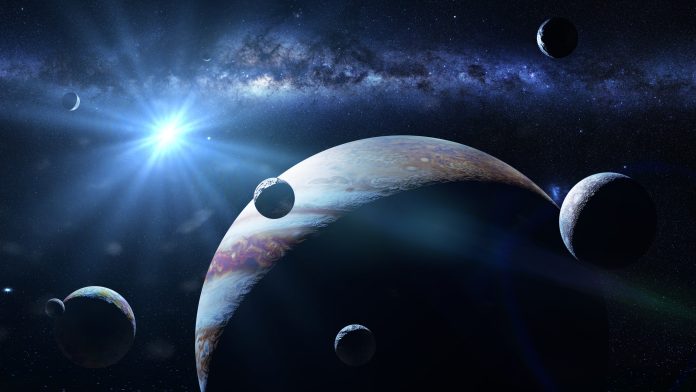In a groundbreaking study, researchers from Ludwig Maximilian University (LMU) have revealed a new model that challenges current theories on the formation of giant planets like Jupiter, offering deeper insights into the mysteries of our solar system and beyond
Traditional theories suggest that giant planets emerge from the gradual accumulation of asteroid-like bodies known as planetesimals, followed by the slow accretion of gas over millions of years. However, these models struggled to explain the presence of gas giants located far from their host stars, such as Jupiter and Saturn, or the formation of ice giants like Uranus and Neptune.
The growth of planets
Now, astrophysicists from LMU, along with collaborators from the ORIGINS cluster and the Max Planck Institute for Solar System Research (MPS), have developed a model that integrates all critical physical processes involved in planet formation.
Their findings suggest that disturbances in protoplanetary disks, referred to as substructures, can trigger the rapid formation of multiple gas giants.
The model demonstrates how tiny dust particles, just millimetres in size, accumulate efficiently within turbulent gas disks. These initial disturbances in the disk prevent dust from dispersing towards the star, creating ideal conditions for planet formation. Dust accumulation provides a rich reservoir of “building material” crucial for the swift growth of planets.
Planetary evolution
Professor Til Birnstiel, a co-author of the study, elaborates, “When a planet gets large enough to influence the gas disk, this leads to renewed dust enrichment farther out in the disk,
“In the process, the planet drives the dust — like a sheepdog chasing its herd — into the area outside its own orbit.”
One of the model’s implications is its ability to explain the diverse configurations of planetary systems observed both in our solar system and beyond.
In contrast to our orderly system with gas giants at distances ranging from 5 to 30 astronomical units (au), recent observations by the ALMA observatory have identified gas giants forming at distances exceeding 200 au in young planetary systems.
This is the first time a simulation has traced the process whereby fine dust grows into giant planets,” notes Lau.
The model offers a compelling explanation for why our solar system formed planets after Neptune.
This insight shows the uniqueness of our planetary neighbourhood while shedding light on the dynamic processes shaping planetary systems throughout the universe.
These new revelations could reshape our understanding of planetary evolution and the diversity of celestial systems. With further advancements in observational techniques and theoretical modelling, researchers anticipate uncovering more secrets hidden within the vast expanse of our cosmic neighbourhood.











